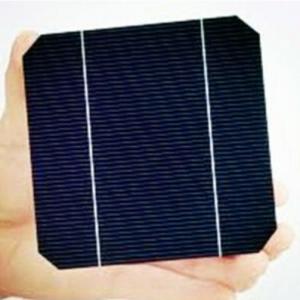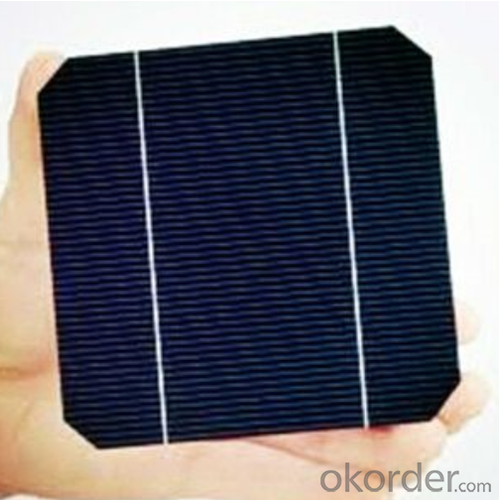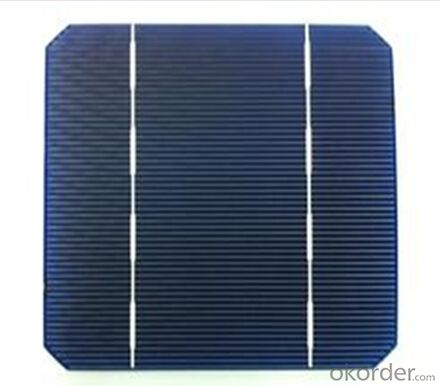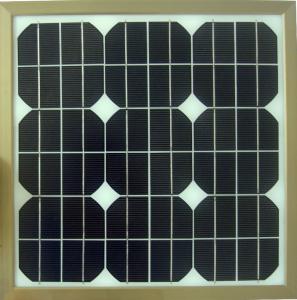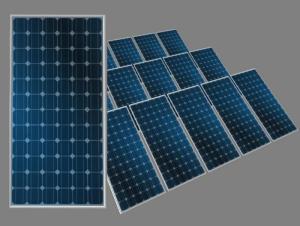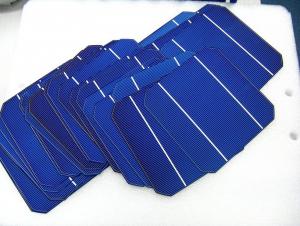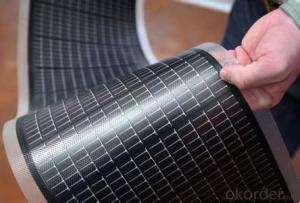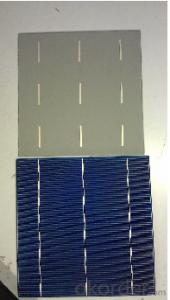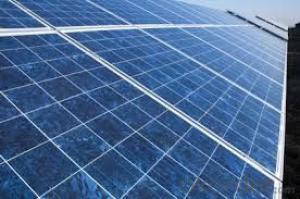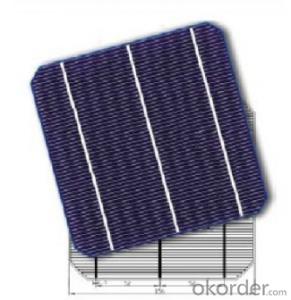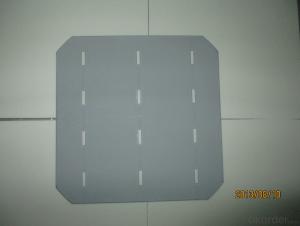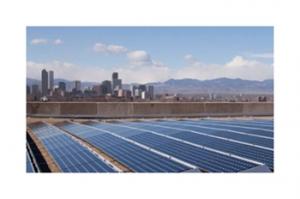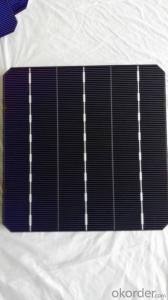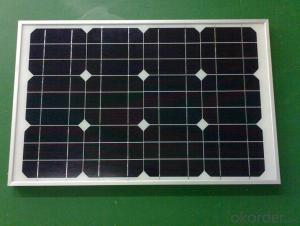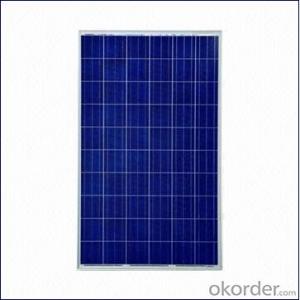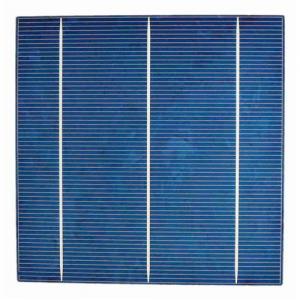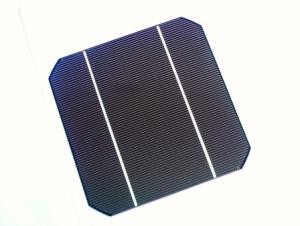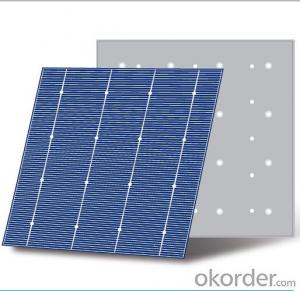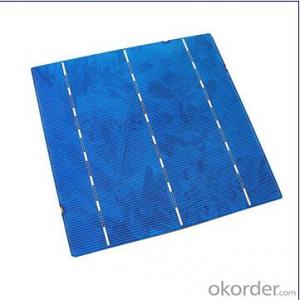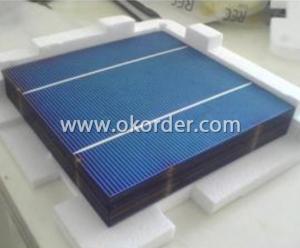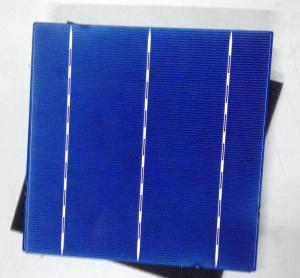Fraunhofer Solar Cells for Solar Panel Mono/Polycrystalline 156
- Loading Port:
- China main port
- Payment Terms:
- TT or LC
- Min Order Qty:
- 100000 watt
- Supply Capability:
- 10000000 watt/month
OKorder Service Pledge
OKorder Financial Service
You Might Also Like
1. Structure of Solar Cell for Solar Panel Monocrystalline and Polycrystalline 156
A solar cell, or photovoltaic cell, is an electrical device that converts the energy of light directly into electricity by the photovoltaic effect, which
is a physical and chemical phenomenon.
It is a form of photoelectric cell, defined as a device whose electrical characteristics, such as current, voltage, or resistance, vary when exposed to light.
Solar cells are the building blocks of photovoltaic modules, otherwise known as solar panels.
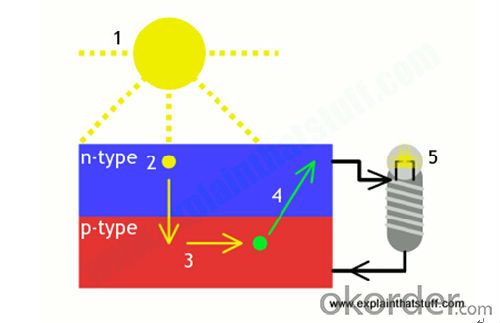
2. Main Features of the Solar Cell for Solar Panel Monocrystalline and Polycrystalline 156
• 16.8%~18.25% high efficiency
• 100% checked quality
• SO9001/ISO14001/TUV/UL
• fast lead time
3. Solar Cell for Solar Panel Monocrystalline and Polycrystalline 156 Images
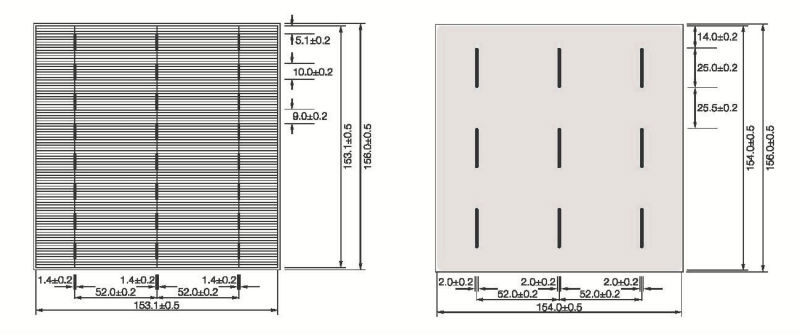
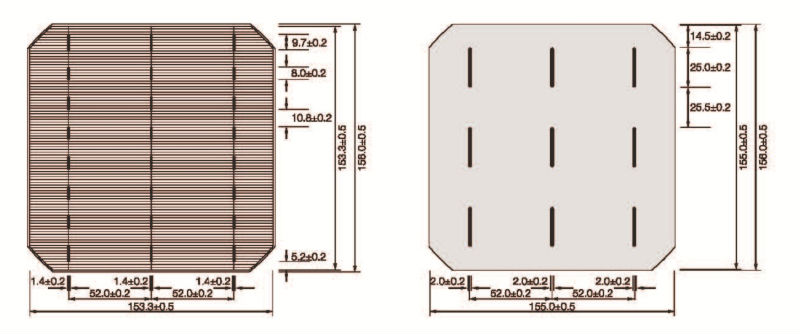
4. Solar Cell for Solar Panel Monocrystalline and Polycrystalline 156 Specification
poly 156 cell Electrical Characteristics( solar cell for solar panel ) | ||||||||||||
Efficiency(%) | 18 | 17.8 | 17.6 | 17.4 | 17.2 | 16.8 | 16.6 | 16.4 | 16.2 | 16 | 15.8 | 15.6 |
Pmpp(W) | 4.33 | 4.29 | 4.24 | 4.19 | 4.14 | 4.09 | 4.04 | 3.99 | 3.94 | 3.9 | 3.86 | 3.82 |
Umpp(V) | 0.53 | 0.527 | 0.524 | 0.521 | 0.518 | 0.516 | 0.514 | 0.511 | 0.509 | 0.506 | 0.503 | 0.501 |
Impp(A) | 8.159 | 8.126 | 8.081 | 8.035 | 7.99 | 7.938 | 7.876 | 7.813 | 7.754 | 7.698 | 7.642 | 7.586 |
Uoc(V) | 0.633 | 0.631 | 0.628 | 0.625 | 0.623 | 0.62 | 0.618 | 0.617 | 0.615 | 0.613 | 0.611 | 0.609 |
Isc(A) | 8.709 | 8.677 | 8.629 | 8.578 | 8.531 | 8.478 | 8.419 | 8.356 | 8.289 | 8.22 | 8.151 | 8.083 |
mono 156 Electrical Characteristics( solar cell for solar panel ) | ||||||||||||
Efficiency(%) | 20 | 19.2 | 19 | 18.8 | 18.6 | 18.4 | 18.2 | 18 | 17.8 | 17.6 | 17.4 | 17.2 |
Pmpp(W) | 4.59 | 4.54 | 4.49 | 4.45 | 4.4 | 4.35 | 4.3 | 4.26 | 4.21 | 4.16 | 4.11 | 4.08 |
Umpp(V) | 0.541 | 0.54 | 0.538 | 0.535 | 0.533 | 0.53 | 0.527 | 0.523 | 0.519 | 0.518 | 0.516 | 0.514 |
Impp(A) | 8.484 | 8.407 | 8.346 | 8.318 | 8.255 | 8.208 | 8.159 | 8.145 | 8.112 | 8.031 | 7.95 | 7.869 |
Uoc(V) | 0.64 | 0.639 | 0.638 | 0.637 | 0.636 | 0.634 | 0.632 | 0.631 | 0.63 | 0.629 | 0.628 | 0.627 |
Isc(A) | 8.972 | 8.959 | 8.936 | 8.912 | 8.875 | 8.83 | 8.805 | 8.787 | 8.775 | 8.695 | 8.615 | 8.535 |
5. FAQ of Solar Cell for Solar Panel Monocrystalline and Polycrystalline 156
Q1. How long can we receive the product after purchase?
A1.In the purchase of product within three working days, We will arrange the factory delivery as soon as possible. The pecific time of
receiving is related to the state and position of customers
Q2. Can we visit your factory?
A2:Surely, I will arrange the trip basing on your business schedule.
Most Common Uses of Solar Cells
Perhaps the most popular use of solar energy is one that doesn't involve technology at all: drying wet things. People around the world depend upon the sun to dry everything from laundry to crops. It's an effective way to achieve a goal without relying upon electricity.
It may seem unusual, but solar power has become a popular way to provide power to lighting systems that activate after the sun goes down. From street lights to garden lamps, solar power provides the energy needed to illuminate the darkness late into the night. These lights contain batteries that charge during the day as sunlight hits the solar cells. At night, a photoresistor detects the absence of light and a circuit board triggers the batteries to discharge and provide power to LED lights, which are efficient and bright.
Solar cells are very useful in powering space vehicles such as satellites and telescopes (e.g. Hubble). They provide a very economical and reliable way of powering objects which would otherwise need expensive and cumbersome fuel sources.
The above design for a solar cell array in space features many inflatable, fresnel reflectors which focus the Sun's light on small arrays of high efficiency cells.
The international space station is also another good example of solar cells being used in space. When it is finished, the station will have the most powerful solar array in space. Four sets of gold coloured wings (each one being 72 metres long and larger than the space station itself) will contain 250,000 solar cells and the whole array will be able to power a small neighbourhood. Some of the energy will be used immediately, such as in life support machines while some will be stored in batteries for when the station is not in use.
Solar cells are also being used to power the rovers which will be examining the surface of Mars in early 2004.
- Q: Can solar cells be used in ski resorts for snowmaking?
- Yes, solar cells can be used in ski resorts for snowmaking. Solar panels can generate electricity from sunlight, which can be used to power snowmaking machines. This can provide a sustainable and environmentally-friendly solution for snowmaking in ski resorts.
- Q: Can solar cells be used for powering water treatment plants?
- Yes, solar cells can be used for powering water treatment plants. Solar energy can be harnessed through solar panels and converted into electricity to power the various processes involved in water treatment, such as pumping water, filtering, disinfection, and distribution. This not only reduces reliance on traditional energy sources but also provides a sustainable and environmentally-friendly solution for powering water treatment plants.
- Q: What is the cost of solar cells?
- The cost of solar cells varies depending on a variety of factors such as the type and size of the solar cell, installation costs, and government incentives. On average, the cost can range from $0.30 to $0.60 per watt for residential solar cells and can be higher for commercial or utility-scale installations. It's important to consider the long-term benefits and savings that solar cells provide, making them a cost-effective investment in renewable energy.
- Q: How do solar cells impact energy independence?
- Solar cells impact energy independence by providing a renewable and sustainable source of electricity. They reduce dependence on fossil fuels and foreign oil, allowing countries and individuals to generate their own clean energy. Solar cells can be installed on rooftops, in remote areas, or even integrated into buildings, enabling individuals and communities to become self-sufficient and less reliant on centralized power grids. Ultimately, solar cells contribute to reducing carbon emissions and promoting long-term energy independence.
- Q: What is the role of solar cells in solar-powered water heaters?
- The role of solar cells in solar-powered water heaters is to convert sunlight into electricity. These cells are typically made of silicon and absorb photons from the sun, generating an electrical current. This electricity is then used to power the water heater, which heats the water using the sun's energy. So, solar cells are crucial in harnessing solar energy and enabling the water heater to operate efficiently without relying on traditional electricity sources.
- Q: Anybody ever heard of thin film solar cell? What it that?
- I did hear that term once, but can't remember what it is.
- Q: Can solar cells be used on road surfaces?
- Yes, solar cells can be used on road surfaces. Solar road technology, also known as solar roadways, involves embedding solar panels into roadways to generate electricity. These solar panels are designed to withstand the weight of vehicles and can be used to power streetlights, traffic signals, and even electric vehicles. However, there are challenges to overcome, such as durability and cost-effectiveness, before widespread implementation can occur.
- Q: Can solar cells be used in indoor applications?
- Yes, solar cells can be used in indoor applications, although their efficiency may be lower compared to outdoor use. Indoor applications typically include powering small electronic devices or providing lighting for indoor spaces.
- Q: Can solar cells be used in telecommunications?
- Yes, solar cells can be used in telecommunications. They can provide a reliable and sustainable source of power for telecommunication equipment, especially in remote or off-grid areas where access to electricity may be limited. Solar cells can be utilized to charge batteries or directly power telecommunication systems, ensuring continuous operation and reducing reliance on traditional energy sources.
- Q: Can solar cells be used to power homes?
- Yes, solar cells can be used to power homes. Solar panels, made up of multiple solar cells, convert sunlight into electricity that can be used to power household appliances and lighting. This renewable energy source can provide a sustainable and cost-effective solution for residential power needs.
Send your message to us
Fraunhofer Solar Cells for Solar Panel Mono/Polycrystalline 156
- Loading Port:
- China main port
- Payment Terms:
- TT or LC
- Min Order Qty:
- 100000 watt
- Supply Capability:
- 10000000 watt/month
OKorder Service Pledge
OKorder Financial Service
Similar products
Hot products
Hot Searches
Related keywords
